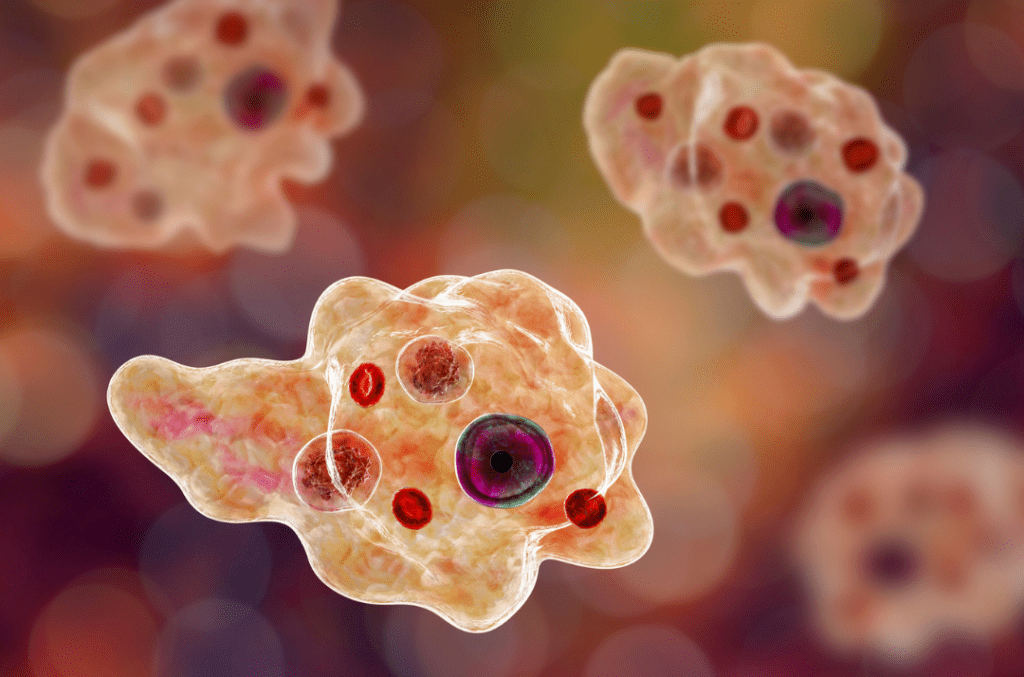Student Healthcare Programs
Undernutrition and Anaemia in Children
Sufficient nutrition and low hemoglobin levels are malnutrition issues that are common among children all over the world. student healthcare programs seem to have positive impact on these maladies. ‘Undernutrition’ describes the situation when not enough nutrients are available, as required for the development and growth of the human body. Anaemia is a condition where there is less of haemoglobin or red blood cells in the blood.
Both states are having adverse influences on physical and moral development of children. That is why the major purpose of the School healthcare services is to prevent them and where such issues have already occurred – to treat them in a timely manner.
Understanding
The body can work optimally only if the organism gets enough nutrients with undernutrition. This could result from different causes that either involve inadequate nutrition, low socio-economic status, poverty and persistent infections. Low-eating iron causes anemia; and a deficiency of vital blood-forming vitamins like B12 or folic acid also contributes to the stoppage of red blood cells production. Student healthcare Services can be an essential part of the fight against diseases caused by college lifestyle; education and treatment are the main things that they do. Tathastu Healthcare, the best student healthcare company,, which is in the lead, effectively solves the health issues of college students, and it gives educational and remedial pieces of training for more health benefit.


Reasons of Undernutrition
- Limited Dietary Intake: The children’s undernutrition is mostly because of their inability to consume enough different foods, but more importantly, a variety of nutritious foods. It`s a complicated puzzle built from the threads of variety deficiency, incomplete breastfeeding practice and limited access to fresh products. Such nutrition meals and supplement to students bodies are the Student healthcare programs care highly involve in provision.
- Inadequate Socioeconomic Factors: It often becomes a tough challenge for families in poverty to find and buy healthy foods. The absence of resources could make health issues worse that can be seen in that food insecurity would come up, and limited access to medical services would make undernutrition situation even unhealthier.
- Health Conditions and Infections: Chronic diseases, for example, diarrhoea as well as respiratory infections, can harm a child’s ability to absorb and use micronutrients and nutrients, and will cause undernutrition as a result. Within the scope of School healthcare services, early detection and medical treatment of the health issues will be provided.
Effects of Undernutrition and Anaemia
Undernutrition and anaemia have profound effects on children’s health:Effects of Undernutrition and Anaemia Undernutrition and anaemia have profound effects on children’s health:
- Growth Stunting: Inappropriate nutrition will affect physical growth and make children smaller in the body and later to them they will have delayed milestones.
- Cognitive Development Impairment: Brain impairment can stem from nutrient imbalance during brain growth that gives rise to learning disabilities and cognitive decline.
- Increased Vulnerability to Infections: Poor and undernourishment of children’s immune systems and anaemia means that they are more likely to beillden. Immunity to various diseases is inferior and they are prone to infections.
Examination and Testing
The sooner undernutrition and anaemia is diagnosed, the earlier the patient can undergo treatment and medical care
- A doctor uses the complex tools of physical examinations, growth monitoring and laboratory tests for anaemia diagnosis among other methods to assess the nutritional status and occurs.
- The Medical Tests and Evals Here and particularly the diagnostic tests, which might involve measurements of key nutrients serum level like iron, vitamin B12, and folate as well as the haemoglobin levels to diagnose anaemia.


Nutritional interventions
The dietary strategies that mainly involve the diet intake and the interventions that are focused on undernutrition and severe anaemia is a prominent issue. We are fortunate to have this partnership with nutritionists, and School healthcare services can avail upon in their advisory services.
Dietician Recommendations: The role of the dietitian and medical practitioners become crucial by way of educating and advising patients to eat food that is wholesome and made of balanced diets that are sources of important nutrients such as iron and protein.
Micronutrients: Widespread food deficiency leads to malnutrition and the best way to compensate the nutritional impacts is through supplementation with micronutrients and vitamins. Iron tablets or tonics are very much the most typical measures versus iron deficiency
Nutrition Programs: Student healthcare programs focus on food fortification of staple foods such as flour, rice, and salt to improve the nutrition status of the population.
Healthcare Initiatives
The incorporation of the Student healthcare programs and awareness campaigns forms a necessary foundation in the creation of fully-fledged nutrition programs.
Community Health Programs: Community clinics and NGOs, which are most likely they are supported by student healthcare companies offer nutritional training, growth surveying, and access to fortified foods or supplements.
Enlightening Sessions: Students at schools are provided with learning programs through School healthcare services that teach skills related to nutrition, breastfeeding, and hygiene.
Obstacles to Surmount in the Cure Against
Undernutrition and Anaemia One of the problems that student health programs that address undernutrition and anaemia have to overcome is the existence of various obstacles.
- Socioeconomic Barriers The hungry masses and the decline in income of the poorest of the poor make the availability of nutritious foods and health services within their reach a myth.
- Disparities in Healthcare Access: The unhealthy version of the health care infrastructure and absence of services to the rural communities we aim at delaying diagnosis and treatment, which our student healthcare Services are able to cure.
- Policy and Governance: Policies and governance with a strong base needs to be put in place for enhancing food security and healthcare services among the victims of tragedy.
The consequences
Cognitive Processes: Cognitive development in children may be affected by of Iron anosmiaemia, a serious problem that is aimed to deal with the Student healthcare programs for students who have low academic achievements.
Physical Dimensions: Student healthcare Services are anchored on Nutrition and Care to curb anaemia resulting from Growth.
Emotional Healthfulness: The School healthcare services address inevitable tiredness of anemia and they help to develop child’s emotional status.


Preventive Strategies
Prevention steps should be enforced due to the gradual decrease of the numbers of children suffering from anaemia as our goal is indicative of many Student healthcare programs.
Early Intervention Programs: Student healthcare Services pay serious attention to recovery and the treatment of anemia as soon as it is detected during the routine analysis and hemoglobin tests. They are situated as the mainspring ofStudent healthcare programs meant for the early diagnosis and treatment.
Maternal and Child Healthcare Programs: Encompassing both maternal and child healthcare programs should include prenatal care and dietary advise, and this can be helpful in ensuring that anaemia is mitigated among infants and young children. Such programs are clear cases of School healthcare services., which schools commonly main in health system.
Collaborative Workplace
Forming alliances with various stakeholders such like Student healthcare programs and other students is essential in fighting the iron deficiency problem. Collaborative efforts of these networks are student-oriented and would bring on-campus student healthcare Services
NGO Activity: NGOs significantly perform role in community-focused activities that include nutritional education, supplement food programs, and easy accessibility of ready-to-use food that are fortified to battle anaemia. Tathastu Healthcare, a famous student healthcare company, is a key player in the solutions to these health problems among the students giving advice for improved health and feeling.
Governmental Policies: Policy makers may incubate iron deficiency syndrome avoidance programs like fortification schemes, healthcare subsidy, and Student healthcare programs. encouraging healthy iron-containing food consumption. These measures usually provide medical aid and psychological support and treatment to the students.
Global advocacy and sustainable goals
UNICEF and WHO Initiatives: UNICEF and WHO collaboration in childhood and Student healthcare programs provide implementation with enhanced provisions for student healthcare Services, school nutrition and health, and disease immunization and risk mitigation. Through this partnership we are able to join hands with the School healthcare services of the school and look at how we can prevent stunting and anaemia – the 2 chronic diseases in Malawi.
Sustainable Development Goals (SDGs): The intention of SDGs (Sustainable Development Goals) with undernutrition, anemia, and other health difficulties as the main target areas, in particularly SDG2 (Zero Hunger) and SDG3 (Good Health and Well-being), provide us a strategic perspective for setting long-term goals for eradicating these conditions at a global scale. They are capturing the hearts of the majority of student healthcare companies. driving the mission.


Conclusion
A battle against the nutritional issues and anaemia has to do with advocacy, investment in the SDGs, the introduction of technology and partnerships inside different sectors. Student healthcare programs will eliminate malnutrition and anemia by liaising with organizations like UNICEF and WHO, recognizing the relevance of the SDGs in this pursuit, and capitalizing on research in nutrition as well as innovations in food science. Nutritional Underdevelopment and Anaemia among Children is the fundamental subject that student healthcare companies should focus on. Find out what Tathastu is up to in a positive way.






